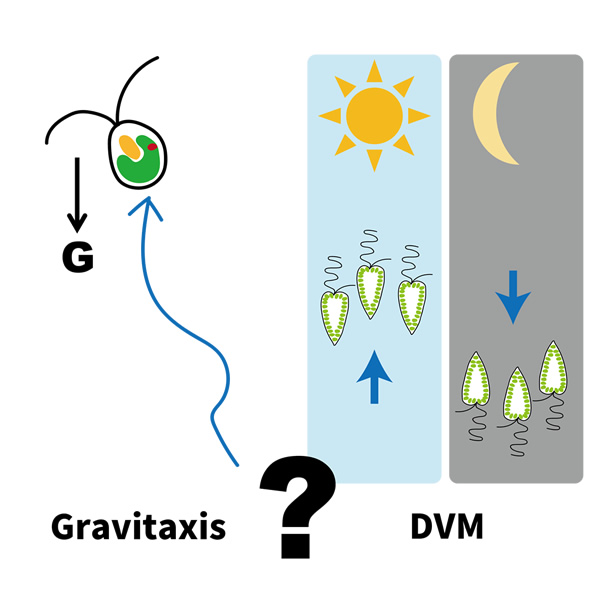Grant-in-Aid for Transformative Research Areas (A)
Publicly Offered Research:2022FY
Ethology of swimming microalgae in vertical environments
- Principal
investigator - Azusa KageDepartment of Physics, Gakushuin University
Gravity is an important factor in the swimming of microalgae. In nature, red tide algae show diurnal vertical migration. In the laboratory, negative gravitaxis, the tendency of individuals to swim against gravity, and bioconvection, a collective motion driven by gravity and negative gravitaxis, are known. Although some studies have visualized the vertical movement of microalgae, the relationship between gravitaxis and diurnal vertical migration is not clearly understood. To elucidate diurnal vertical migration, a meter- or kilometer-scale phenomenon, at the individual level, a broader field of view than that of a conventional optical microscope (several hundred µm squares) is necessary. In this study, a vertical environment is reproduced in the laboratory as a diorama environment, and the behavior of microalgae in the vertical environment is thoroughly visualized and analyzed using a wide-field horizontal microscope. The obtained trajectories will be classified using machine learning methods to clarify how microalgae respond to gravity and, in particular, how red tide algae perform diurnal vertical migration.

 Ethological dynamics in diorama environments
Ethological dynamics in diorama environments